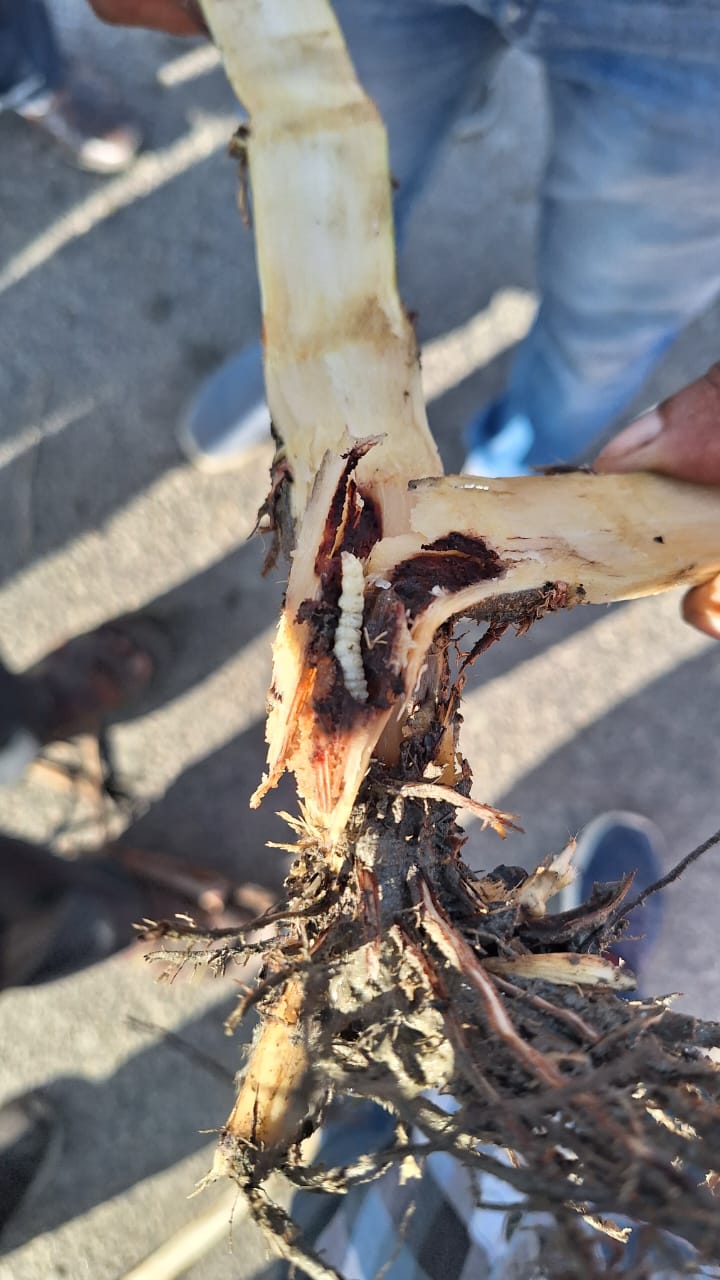Root Borer
Root Borer
This is the only species of borer complex of sugarcane infesting the underground part of canes and so called as ‘root borer’. It infests in the north Indian sugarcane belt, Northern areas of Gujarat, Maharashtra, Karnataka and Andhra Pradesh. It also occurs in Pakistan. Malaysia and Bangladesh. It is a serious pest in the subtropical region. The borer is active at high temperatures and moderate humidity levels. Generally ratoon is more prone to its attack. Unirrigated fields and sandy or sandy loam soils harbor high borer incidence.
DAMAGE SYMPTOMS
• It attacks the underground shoot portion of cane in the early stages, i.e. during May-June.
• Infested cane of underground part observed a single fine hole at the base of shoot and one or two open leaves may also dry up along with the dead heart.
• Dead hearts are formed which cannot be easily pulled out and do not emit offensive smell. Often one or two leaves adjacent to the central whorl also dry-up.
• In grown up plant, the damage symptom is observed in the form of yellowing of leaves.
• Yield loss and sucrose reduction have been observed due to attack of this pest.
Management
• Collection and destruction of affected shoots along with borer larvae.
• Deep harvesting of canes that art to be ratooned should be adopted to expose larvae or pupae.
• Avoidance of ratoons if field heavily infested to minimizes proliferation of the pest
• In cases of severe infestation, fields should be ploughed up and affected stubbles with larvae should be collected and destroyed.
• Collection and destruction of moths using light traps.
• Apply Fipronil 0.60 % GR @12.5kg/ha at time of planting.



